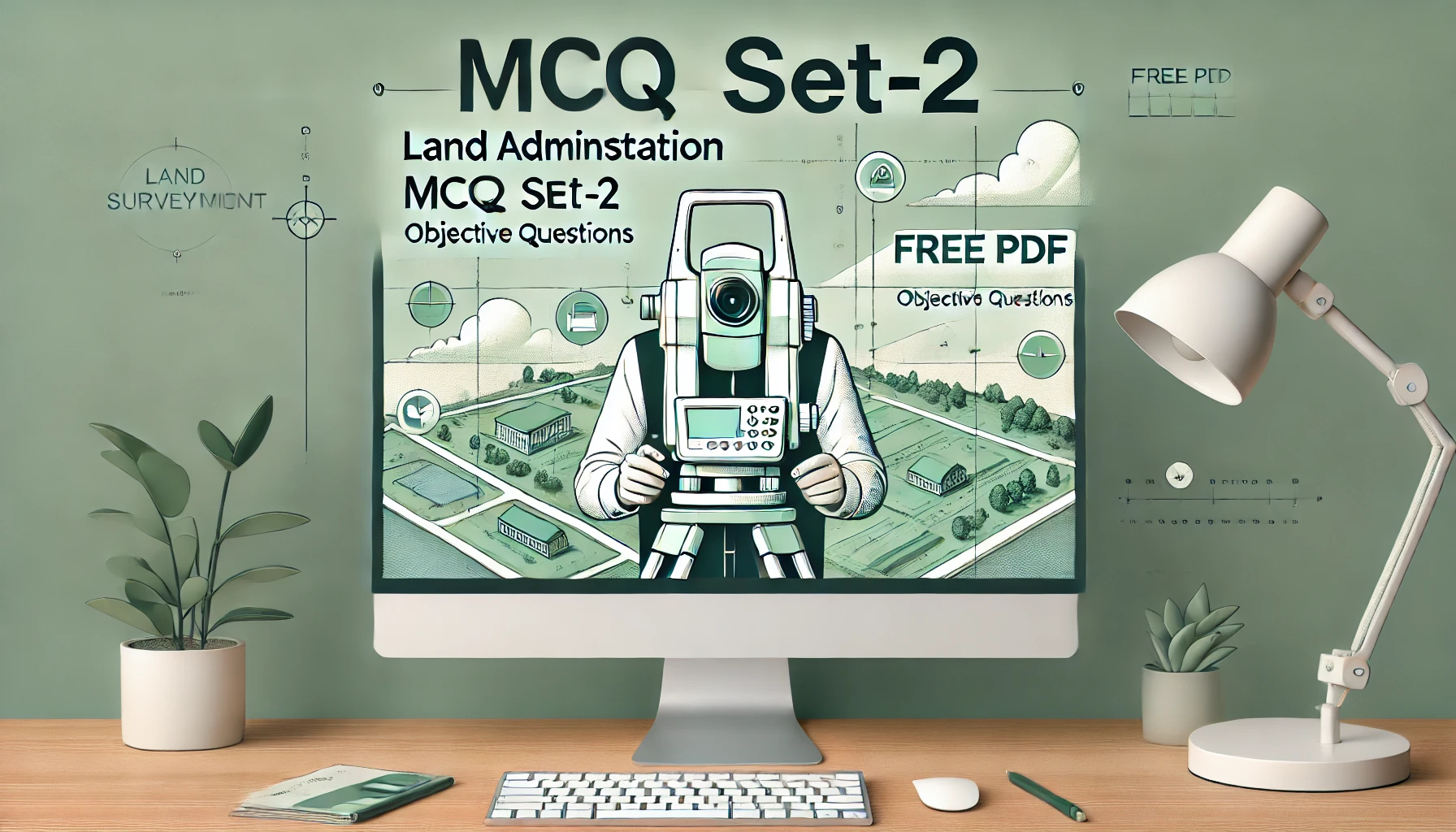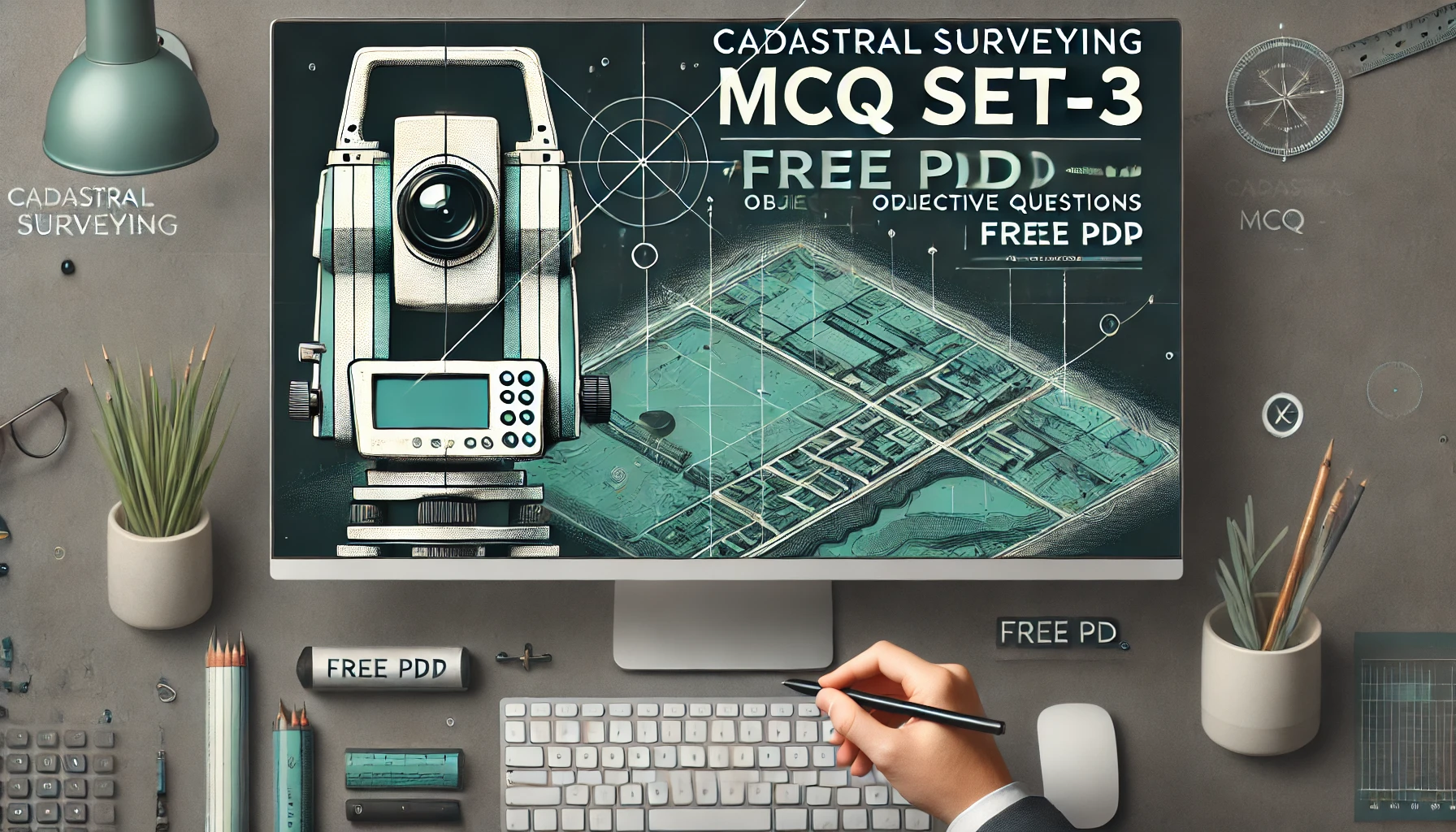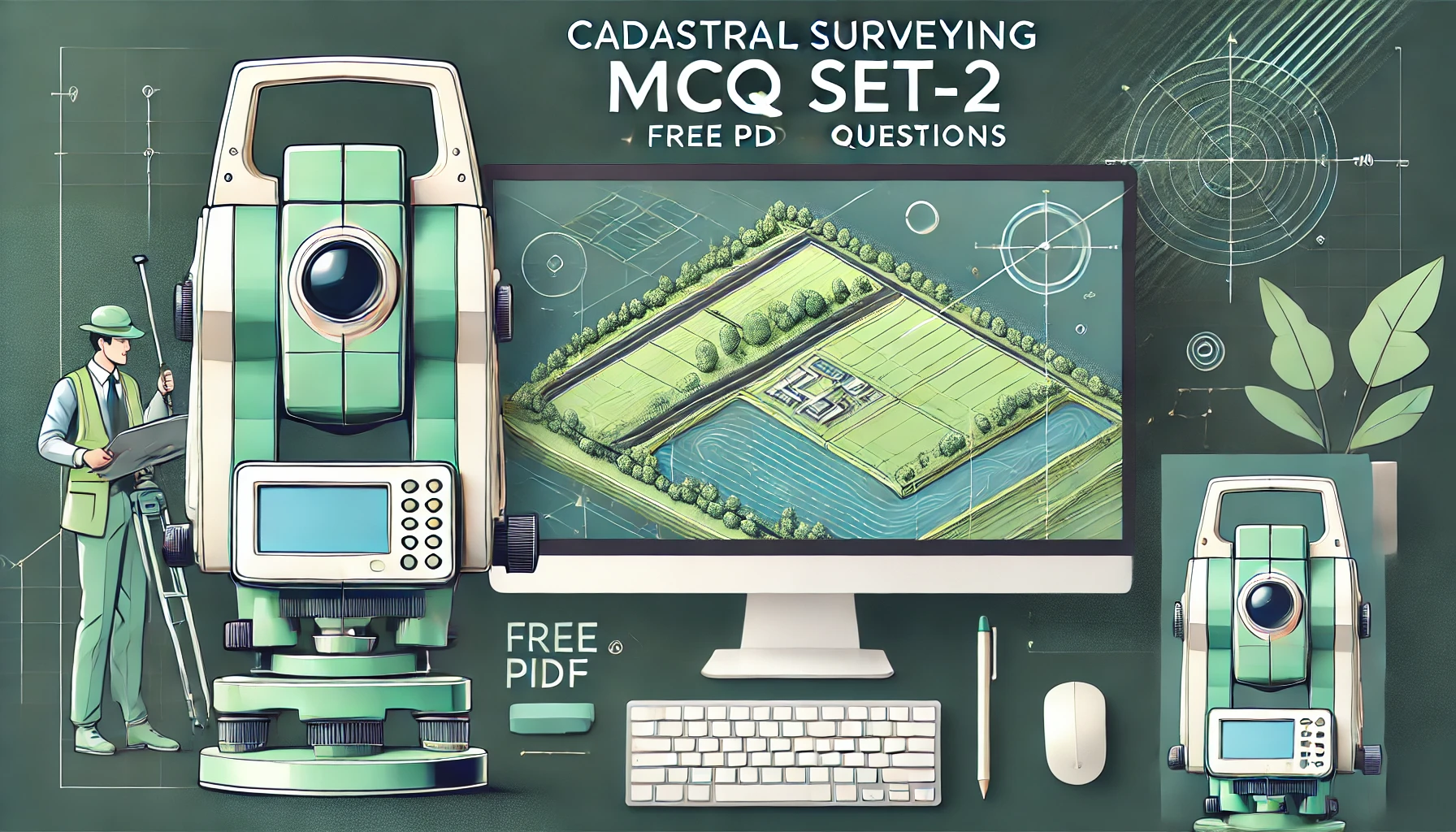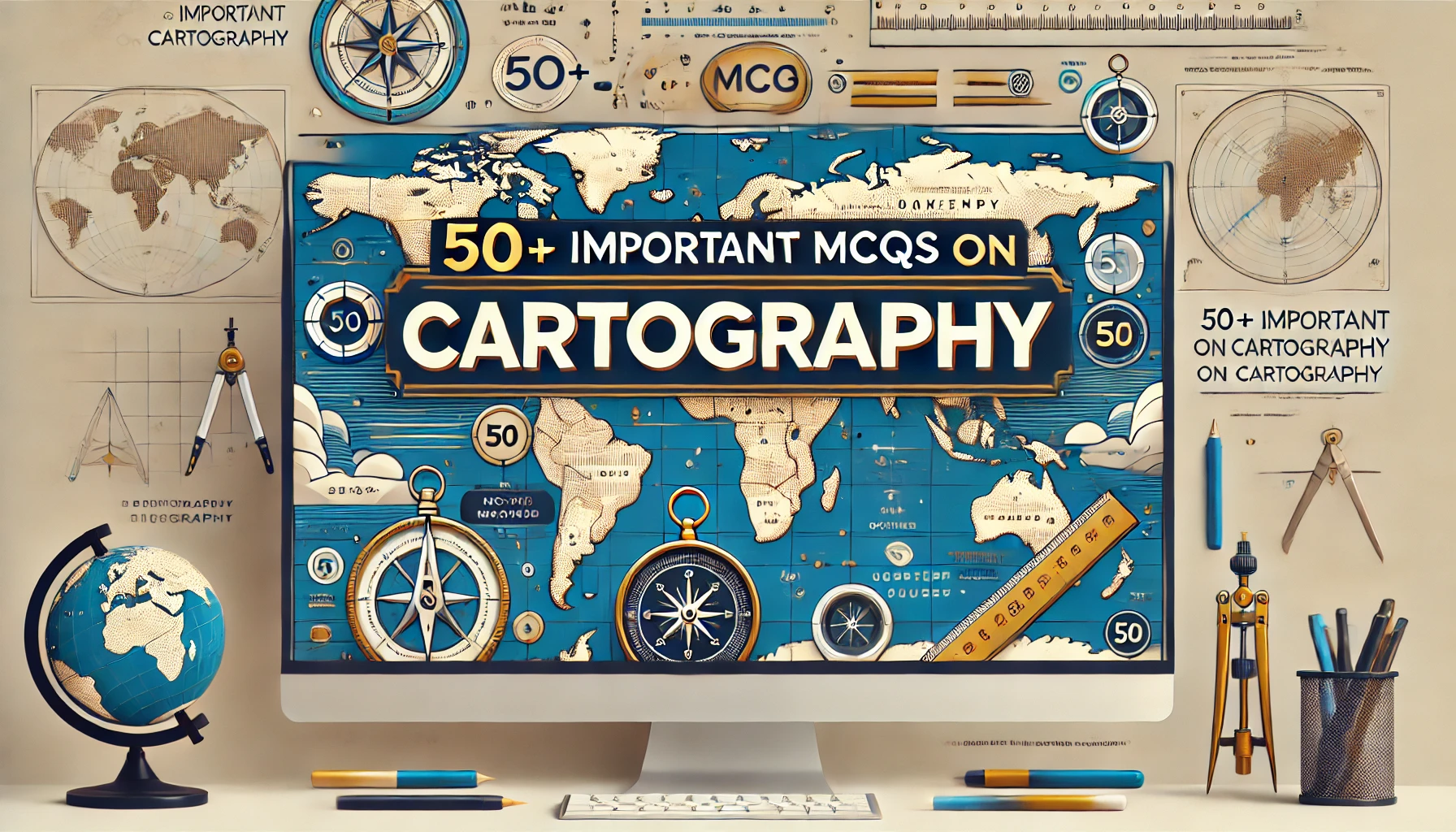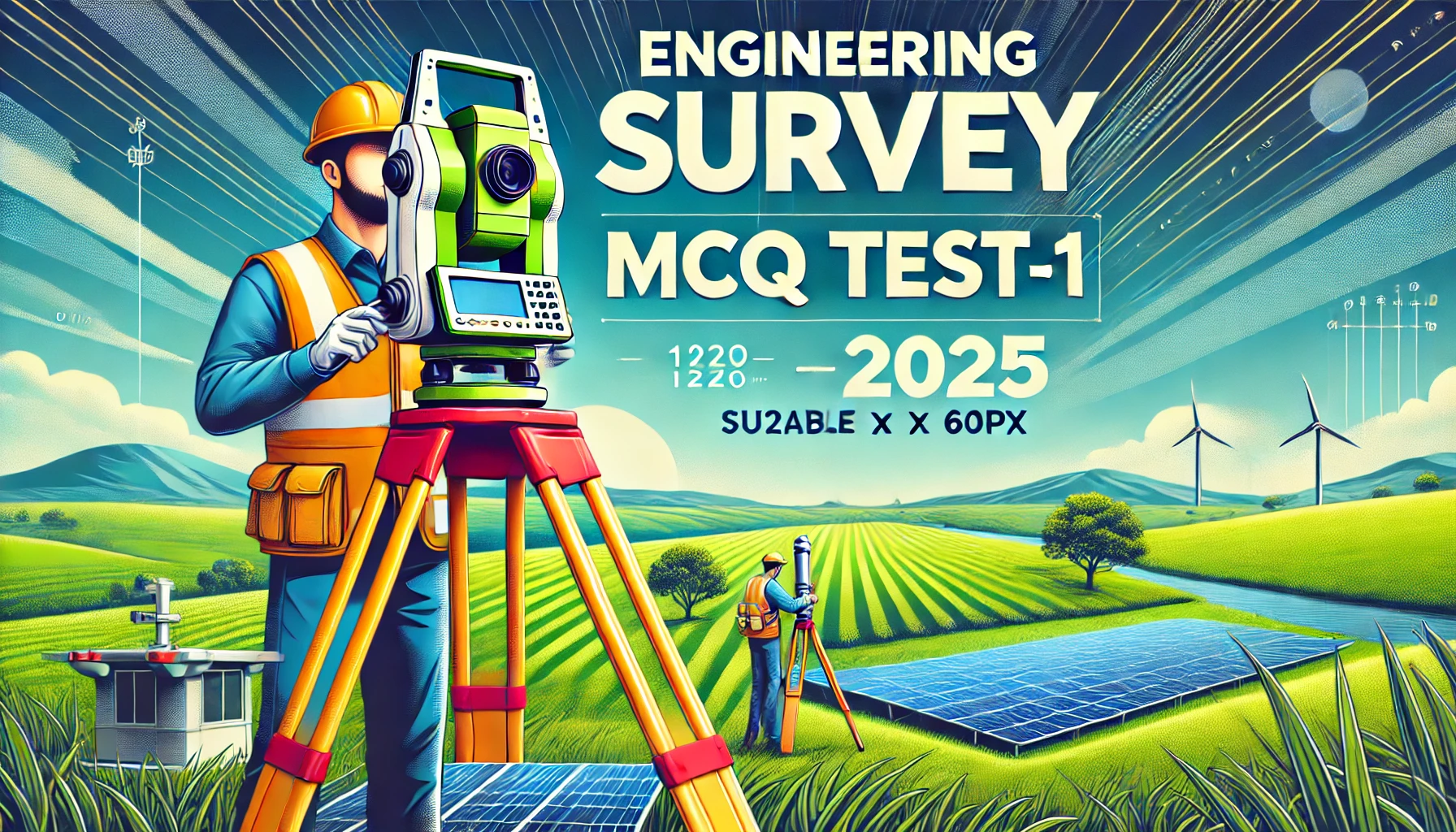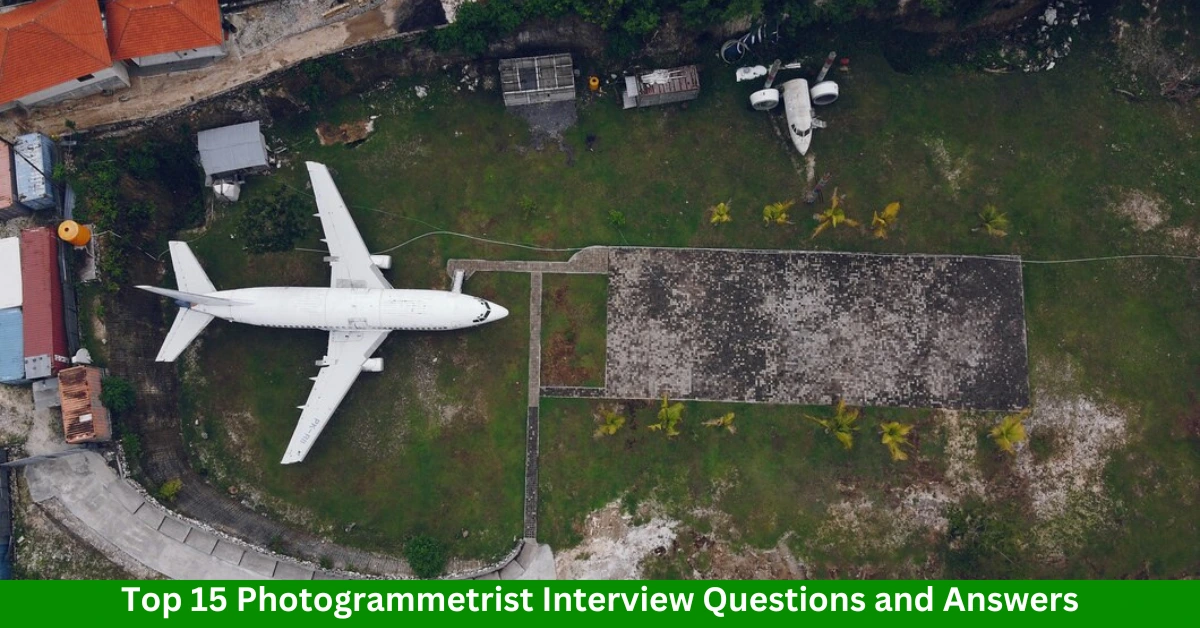Land Administration MCQ Set-2 [Free PDF] Objective Questions
45+ Land Administration MCQ Set-2 In this blog, we’ve curated 45+ thought-provoking multiple-choice questions covering the fundamental and advanced concepts of land administration. ‘Land Administration MCQ Set-2 [Free PDF] Objective Questions’ is designed to help you refresh your basics, challenge your knowledge, and gain practical insights into property management, governance, and land records. Whether you’re a student, a professional in land management, or preparing for exams, this quiz is the perfect way to enhance your expertise in land administration and development. Let’s dive into the ‘Land Administration MCQ Set-2 [Free PDF] Objective Questions’ and start exploring! 1. What does compulsory purchase refer to in the context of land acquisition? A. Expropriation of land for public benefit B. Land consolidation involving ownership adjustments C. Leasing land from private owners for government use D. Voluntary purchase of land by individuals Answer A. Expropriation of land for public benefit 2. Which form of decentralization redistributes decision-making authority among different levels of central government? A. Delegation to semi-autonomous organizations B. Centralization of decision-making authority C. Deconcentration D. Devolution to local governments Answer C. Deconcentration 3. What is the significance of the Local Self Governance Act in Nepal? A. It promotes local governance and citizen participation. B. It focuses solely on urban development without addressing rural needs. C. It centralizes power in the federal government, limiting local autonomy. D. It restricts citizen participation in local decision-making processes. Answer A. It promotes local governance and citizen participation. 4. What does devolution in local governance typically involve? A. Assignment of tasks to local governments without elected officials B. Creation of public enterprises controlled by the central government C. Redistribution of decision-making authority among central government levels D. Transfer of authority to local governments with independent decision-making Answer D. Transfer of authority to local governments with independent decision-making 5. Which term describes the process that allows stakeholders and communities to participate in decision-making? A. Community engagement B. Public participation C. Stakeholder consultation D. Collaborative governance Answer B. Public participation 6. What type of disputes are included under land conflict resolution? A. Environmental disputes B. Boundary, land, and ownership disputes C. Commercial disputes D. Labor disputes Answer B. Boundary, land, and ownership disputes 7. What is a Public-Private Partnership (PPP)? A. A framework for public sector projects without private investment B. A government initiative that excludes private sector involvement C. An agreement between public and private sectors to achieve specific goals D. A contract solely between private companies to maximize profits Answer C. An agreement between public and private sectors to achieve specific goals 8. What is one consequence of weak governance in land administration? A. Insecurity of tenure B. Reduced private sector investment C. Social and political instability D. Land conflicts Answer A. Insecurity of tenure 9. What global drivers are changing land administration systems? A. Sustainable development, globalization, urbanization, economic reform, and technology B. Political instability and conflict C. Population growth and migration patterns D. Climate change and environmental degradation Answer A. Sustainable development, globalization, urbanization, economic reform, and technology 10. In which system is the deed itself registered as evidence of a transaction? A. Transaction Evidence System B. Property Transfer System C. Deed Registration System D. Title Registration System Answer C. Deed Registration System 11. What does the title registration system primarily authenticate? A. The authenticity of property deeds B. The historical transactions related to property C. The verification of property boundaries D. Ownership of a parcel of land Answer D. Ownership of a parcel of land See Also: Land Administration MCQ Set-1 [Free PDF] Objective Questions 12. What type of land registration involves informal transactions without written evidence? A. Deed Registration B. Title Registration C. Private Conveyancing D. Informal Conveyancing Answer D. Informal Conveyancing 13. Which principle states that a change in real rights on immovable property must be registered to be legally effective? A. Consent Principle (requires consent for changes) B. Principle of Publicity (ensures public access to registers) C. Principle of Speciality (identifies subjects and objects) D. Booking principle Answer D. Booking principle 14. How does the improved deed registration system enhance reliability? A. It assures accurate registered information B. It allows for faster processing of property transactions C. It provides a comprehensive history of property ownership D. It reduces the cost of property transactions significantly Answer A. It assures accurate registered information 15. What is the main difference between a positive and a negative registration system? A. A positive system guarantees titles, while a negative system does not. B. A positive system is less complex than a negative system. C. A positive system requires more investigation than a negative system. D. A positive system records transactions, while a negative system guarantees ownership. Answer A. A positive system guarantees titles, while a negative system does not. 16. What is one advantage of the title registration system compared to the deed registration system? A. It provides a more detailed description of the property involved B. It provides sure evidence of ownership C. It requires less skilled personnel to operate effectively D. It allows for quicker recording of documents at a lower cost Answer B. It provides sure evidence of ownership 17. What are the two main types of conveyancing mentioned? A. Title Registration and Deed Registration B. Informal Conveyancing and Title Registration C. Informal Conveyancing and Private Conveyancing D. Private Conveyancing and Title Registration Answer C. Informal Conveyancing and Private Conveyancing 18. What is the first step in the land and property right transfer process? A. Contracting for deed preparation B. Pre-contracting to clarify terms C. Registration of ownership changes D. Marketing for buyers and sellers Answer D. Marketing for buyers and sellers 19. What is the role of the land registry in resolving land disputes? A. To provide documentary evidence required for resolving land disputes B. To provide land information for public functions like land use planning C. To regulate the transfer of property rights and ownership D. To document mortgage information and related interests in land Answer A. To provide documentary evidence required for resolving land disputes See Also: Cadastral Surveying MCQ Set-3 [Free PDF] Objective Questions 20. How many phases were involved in the nationwide Land Reform program carried out in 2021? A. Two phases B. Four phases C. Three phases D. Five phases Answer C. Three phases 21. What type of document is typically required for land registration in Nepal? A. Joint application of the vendor and buyer B. Receipt of land revenue of the current year C. Original land ownership certificate D. Citizenship of vendor and buyer Answer C. Original land ownership certificate 22. What is a significant risk associated with private conveyancing? … Read more
